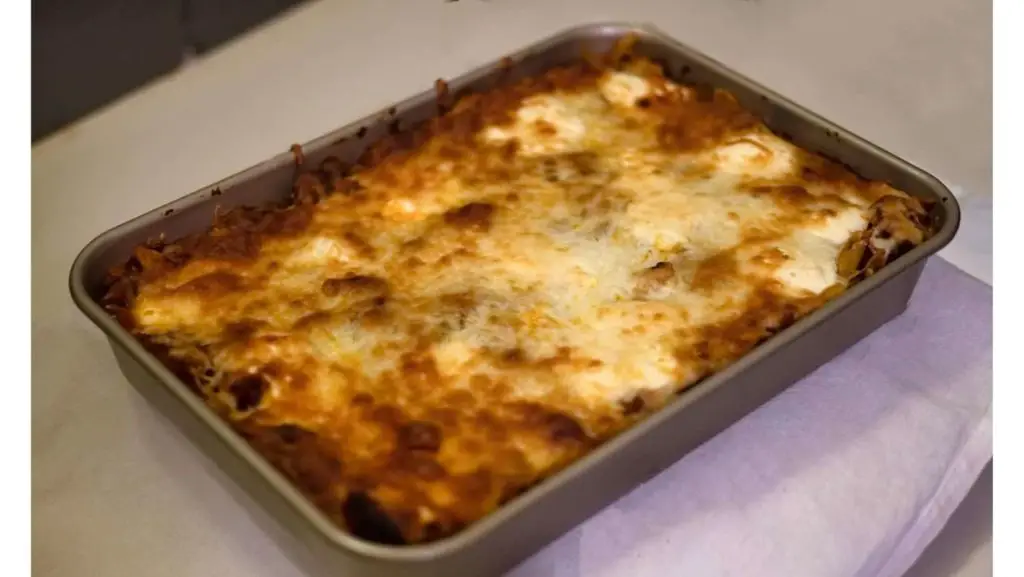Ziti is one of the better pasta shapes suited for liquid-based dishes, such as baked casseroles.
When it comes to making dishes like this, it’s extremely easy to make more than you planned, or simply making far too much pasta than a dish actually calls for.
The good news is that you can freeze ziti without many problems to save a leftover dish for later. You can also cook ziti in advance and freeze it for a later date.

But there are many conflicting opinions about freezing it, and if you should freeze it raw, or cooked.
We know that raw, dry pasta has an extremely long shelf life, and as long as you keep it in an airtight container, it can keep for up to 2 years after its printed best before date.
This means freezing it in its raw form is unnecessary. When it comes to cooked ziti, you’re better off incorporating it into a dish before you freeze it.
Cooking and then freezing plain pasta (see also Cooked Pasta Freezing Guide) does mean that there will be some consistency and flavor changes once you defrost it, and as this can be avoided, there’s no reason to do it.
When you defrost plain, cooked ziti, you’ll still have to reheat it, and this does increase the likelihood of the pasta’s structure breaking down completely, resulting in a mushy mess.
The Shelf Life of Ziti Pasta
Cooked ziti pasta will last for a week, in the best-case scenario, provided that you keep it in the fridge.
This makes freezing a viable and sensible option, as long as you’re planning to freeze it as part of a meal. When frozen, ziti will last at least 2 months before it starts to lose its quality, though this could be longer.
As a rule, you should never leave cooked food out at room temperature for longer than 2 hours, as the risk of bacterial growth and food poisoning skyrockets.
How Do You Freeze Ziti?
The first thing you need to do – and this is a vital step – is to let the dish cool completely before you try to freeze it.
Otherwise, you risk the quality of the dish, and it could result in uneven freezing, or defrosting food that’s already in your freezer.
How To Prepare Ziti For The Freezer
The easiest way to freeze ziti is to portion it out, especially if you’ve got a lot of a dish to freeze.
One of the easiest ways of doing this is to get aluminum foil trays, which are designed to freeze food in portions. You can simply decant the dish between the tins, leaving some room at the top, before putting the lids on and freezing it.
If you don’t have foil trays, you can use airtight containers or freezer bags.
You’ll need to wrap each individual portion in tin foil before you put it into freezer bags, as this will prevent freezer burn, and radical changes in texture.
Once the portions are covered completely, pop them into freezer bags or airtight containers, seal them, and label. Pop them in the freezer, and you’re done.

How Do You Thaw And Reheat Ziti?
To thaw frozen ziti, transfer the dish straight into the fridge, and let it thaw at its own pace. Depending on the portion size, this may take a few hours, or it may take overnight.
The slower you defrost the ziti, the better the consistency and the texture of the dish will be preserved.
If you want to use the dish straight away, and you don’t want to wait, you can thaw it faster by submerging the sealed container into tepid tap water.
Let it soak for at least 30 minutes, and depending on the size of the dish, you may find it fully defrosted. If not, change the water, and repeat until it has thawed completely.
In order to reheat the ziti dish, preheat the oven to 350°F, and put the dish into an oven-proof dish lined with parchment. Let it reheat for about 15 minutes, until the top starts to bubble, and it’s piping hot.
Conclusion
One of the easiest and most comforting meals to make and freeze ahead is baked ziti pasta (see also Freezing Pasta Bake), saving you a lot of effort in the long run.
The only thing you’ll need to do is to get it out of the freezer before you want to use it.

